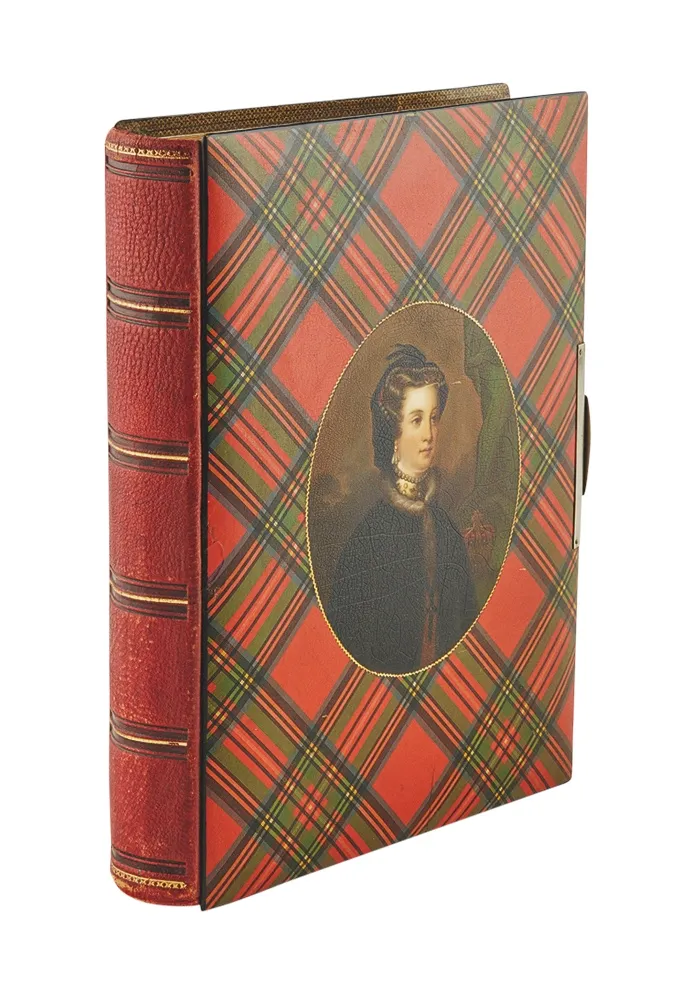I’ve had a thing about Scotland for as long as I can remember. For the romance of the Highlands: the mountains, glens, peat and heather; haggis, shortbread and single malt whisky; the Loch Ness Monster and Highland cattle; Bonnie Prince Charlie, midges and bagpipes. And at the very top of the list, we must, of course, place tartan – the chequered cloth, which, for so many the world over, is the symbol of Scottish identity.
Tartan, at least in its modern form, is not perhaps as ancient as one might imagine. It’s thought that until the invention of regimental tartans in the mid 18th century, patterns (or ‘setts’) derived from local areas or Highland districts rather than specific clans, surnames or organisations, especially if natural dyes were available in a particular region.
Following the Jacobite rebellion of 1745, the Dress Act banned the wearing of ‘Highland Dress’; repeat offenders faced the prospect of transportation to Australia. And then in 1782 the act was repealed. Two years later, a society of enthusiastic Scottish aristocrats met in Edinburgh to promote ‘the general use of the ancient Highland dress’. Tartan was back in business.

In the autumn of 1842, the young Queen Victoria and Prince Albert visited Scotland for the first time. The Prince was struck by the similarity of the Highlands to his German homeland. The picturesque and isolated mountain country became a welcome escape for the royal couple, especially following the lease, purchase and subsequent rebuilding of Balmoral Castle in the 1840s and 50s. And where royalty led, fashionistas flocked. By the 1860s, the Highlands had become a popular destination, thanks in part to the new railway line from Inverness to Perth, completed in 1863.
The Victorians adored clutter, cramming their ‘front parlours’ with decorative nick-nacks: plaster casts, busts, moralising religious prints, potted ferns, domed taxidermy and, with the expansion of the railways, souvenirs from fashionable holiday resorts (including Scotland) especially
if decorated with tartan.
‘Tartanware’ is the name given to the delightful wooden souvenirs made in or near the village of Mauchline, once home to the poet Robert Burns. The area was already known for its transfer-decorated wooden trinkets. This included a ground-breaking snuff box, which featured an airtight wooden hinge that prevented snuff from going stale. But it’s the firm of William and Andrew Smith that, until their unfortunate demise in the 1930s, will forever be associated with tartanware.
By the 1840s, Smiths had invented an ingenious machine that could print out colourful tartan patterns to a high standard – a bit like a Victorian version of the modern ink-jet copier. Workers pasted the finished paper on to sycamore wood, hid the unsightly joints with black paint, and applied several coats of varnish with care. The finished result was a beautifully made artefact of the highest quality, with the wood ageing over time to the colour of butterscotch.

During the heyday of the tartanware craze, the factories and workshops of Mauchline produced a wide range of souvenirs in their many thousands – a seemingly never-ending assortment of domestic objects: snuff, stamp and pill boxes; cigar cases, desk blotters, mini whisky barrels, photo frames, egg timers and cups, tea caddies and trays, candlesticks, beakers and napkin rings.
Today, tartanware is insanely collectable. We’re building up our own set of napkin rings in a random selection of different setts, each one bearing an evocative name or clan: McPherson, Stuart, McCleod, Rob Roy and Prince Charlie – ideal for a Burns Night supper. Today, the official Scottish Register of Tartans lists over 7,000 individual registered tartans, with an estimated 150 new setts added each year. The spirit of tartan not only survives in the 21st century, but thrives.

